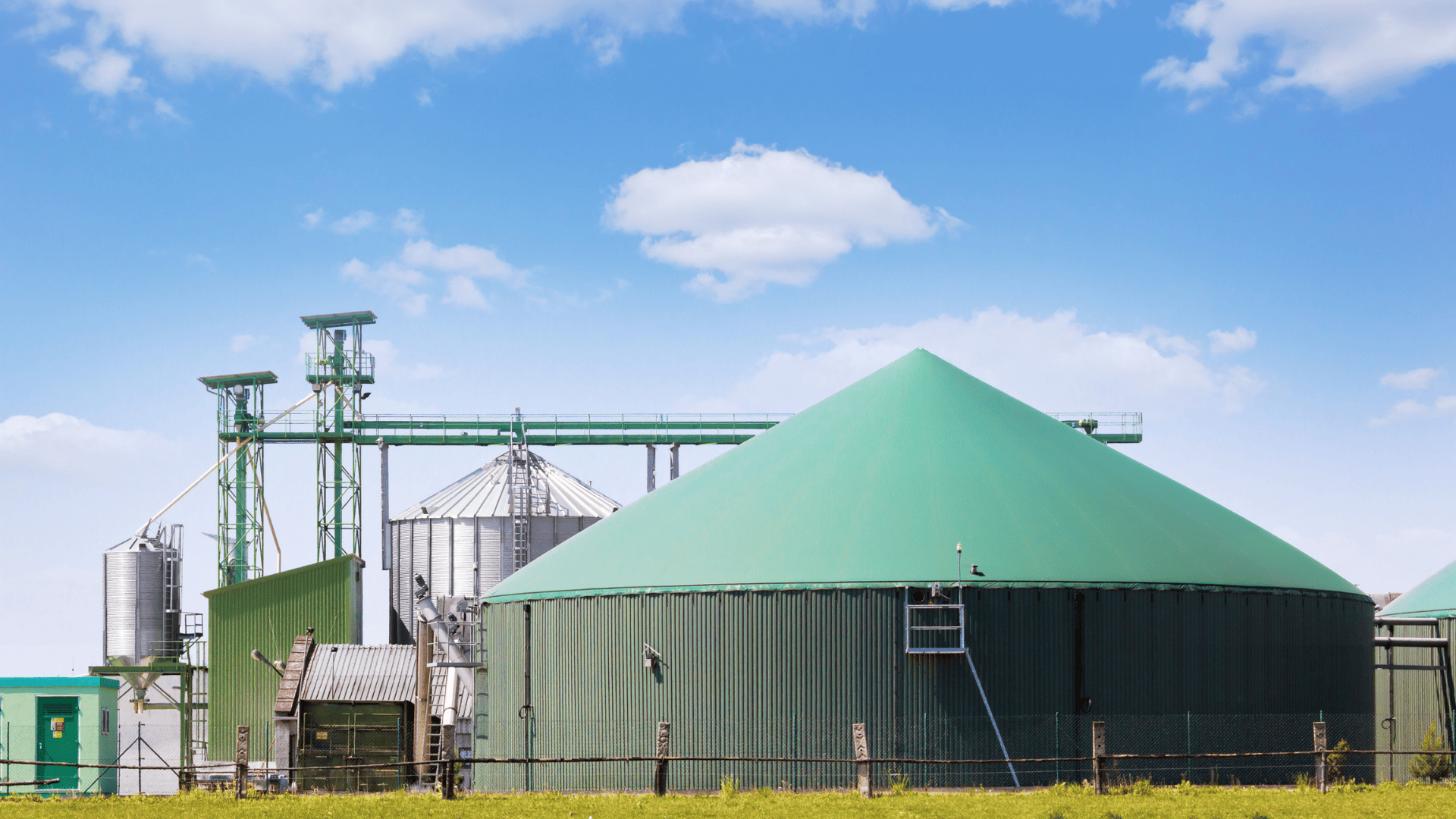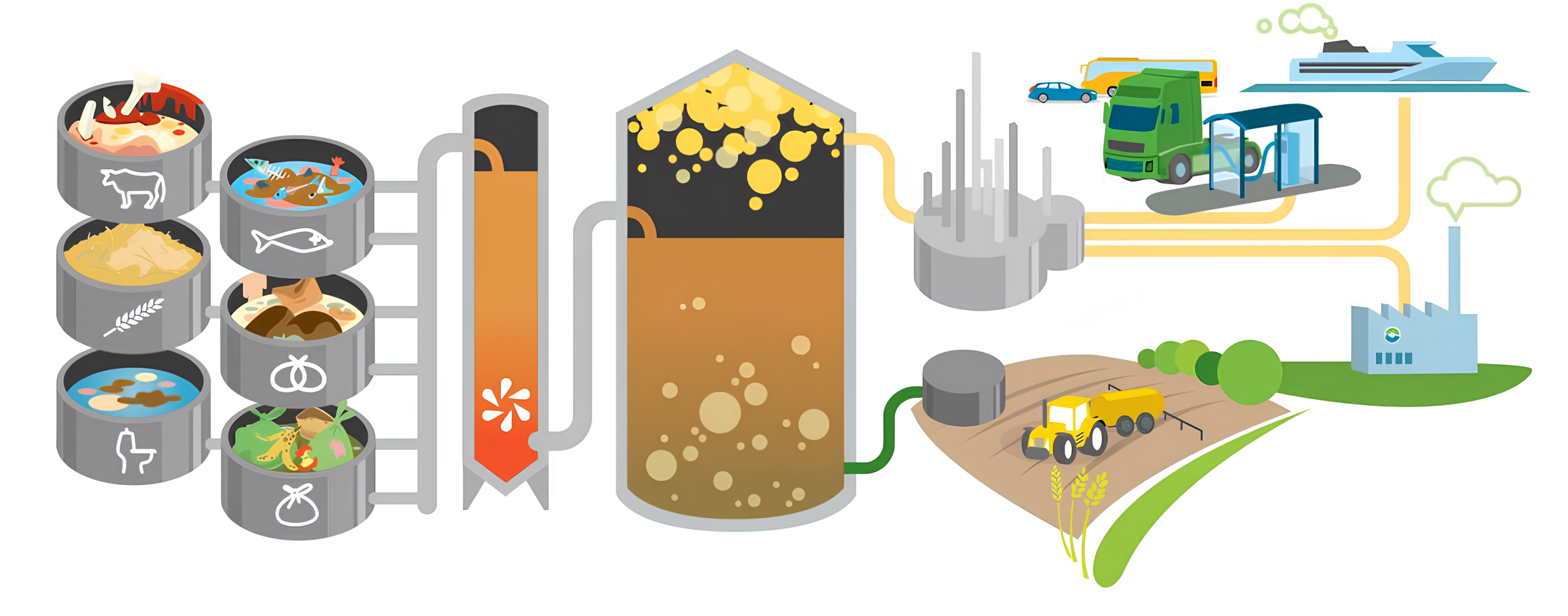The IEA Bioenergy report “Identification and assessment of sustainability effects associated with biogas solutions” explores the multifaceted role of biogas in promoting a circular and sustainable bioeconomy. Here are the main findings of the document.
Biogas, produced via anaerobic digestion from various organic feedstocks (wastewater sludge, agricultural residues, food waste, manure), delivers renewable energy, reduces greenhouse gas (GHG) emissions, and offers additional societal benefits such as nutrient recycling, waste treatment, and improved sanitation.

Image source: Getty Images.
The main report identifies a wide range of benefits, grouped into five key areas:
-
Waste and wastewater treatment sectors: Enhanced sanitation, odor control, water quality improvement.
-
Biogas in Agriculture/rural areas: Income diversification, soil fertility improvement through digestate, reduced synthetic fertilizer use.
-
The use of digestate/biofertilizers: Closing nutrient loops and protecting soils and water.
-
Energy products (biogas, biomethane, CO₂): Secure, renewable energy contributing to energy independence.
-
Effects on society at large: Climate mitigation, circular economy, and resilience to supply chain risks.

Schematic of biogas solutions. Illustration: Mattias Schläger.
The analysis highlights that while GHG reduction is widely recognized, other positive sustainability effects are often undervalued in decision-making because they are hard to quantify. Examples of comprehensive assessments (e.g., Swedish multi-criteria analyses for transport) show biogas is socio-economically competitive compared to both fossil and renewable alternatives when co-benefits are considered.
At a societal level, biogas solutions appear to be in good alignment with the countries’ commitments to sustainable development, including goals on climate change mitigation; waste management; regenerative, circular bioeconomy; and more recently, the broader concept of supply security, including not only energy but also food/nutrients, water, and biogenic carbon.
Global experience
Experiences from Canada, France, Norway, Sweden, and Switzerland demonstrate that policy frameworks, infrastructure, and local context shape outcomes. Strong adoption is linked to supportive policies, digestate standards, and integrated strategies.
While many sustainability effects are cross-sectoral and benefit society at large, all five countries note the essential roles that public policies, legislation and financial support continue to play with respect to advancing biogas solutions. A mix of influential policy related drivers and barriers exist in the studied countries. Policy related risks and uncertainties influence the development of biogas solutions, and its competitiveness is strongly influenced by policy, including subsidies for competing and complementary alternatives.
The report’s recommendations
Promote More Holistic Understanding and Perspectives
- Use science-based, multi-criteria sustainability assessments to inform decisions on technical alternatives.
- Recognize the cross-sectoral benefits of biogas solutions in waste, wastewater, agriculture, energy, transport, and various industrial sectors.
- Encourage greater cross-sector collaboration, shared decision-making and support solutions that contribute to a circular economy. Include different sized solutions and solutions that are co-created with local communities.
- Shift the focus toward integrated strategies that combine multiple renewable technologies to deliver desired functions while addressing urgent sustainability challenges.
Adopt Coherent and Effective Policy Frameworks
- Enable biogas value chain actors to capture the full societal value of their contributions.
- Remove regulatory and administrative barriers, such as restrictions on sustainable cropbased biogas and lengthy approval processes for mature technologies.
- Set clear targets for the production and use of biogas, biomethane, digestate/biofertilizers, and biogenic CO₂, and ensure the development of supporting infrastructure and access to land to make these targets achievable.
Download the full report by IEA Bioenergy (in English)
Source: IEA Bioenergy.